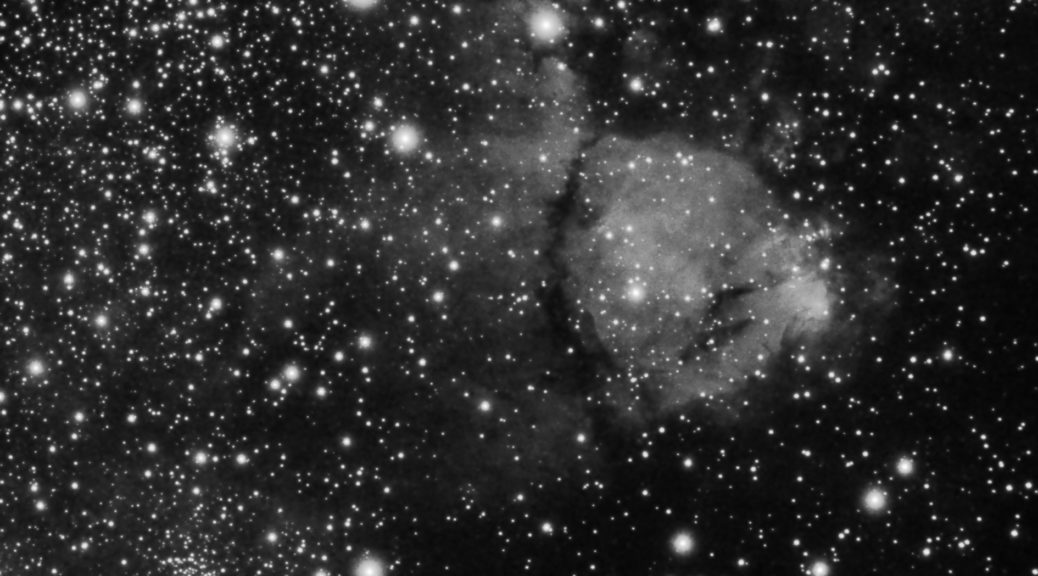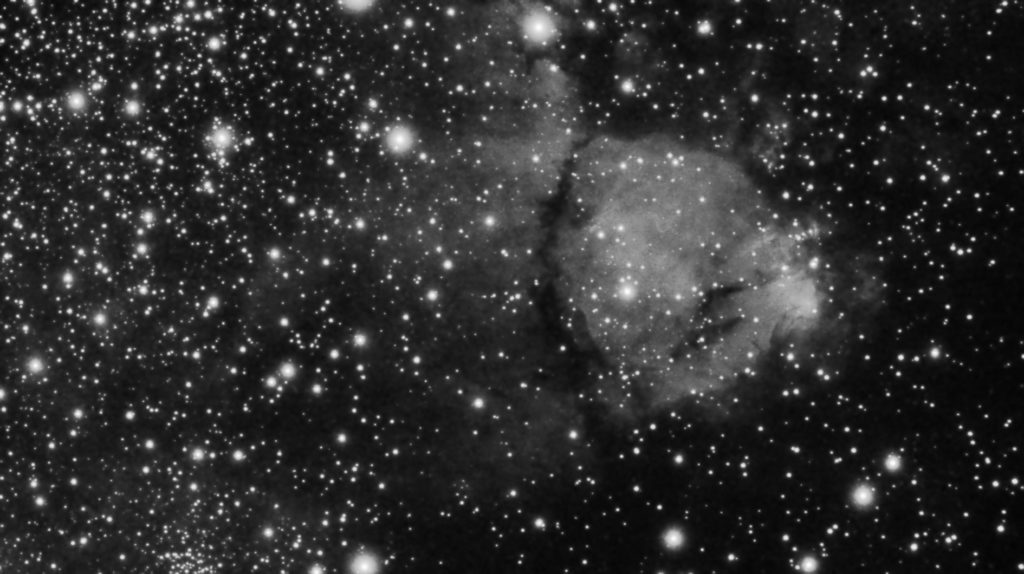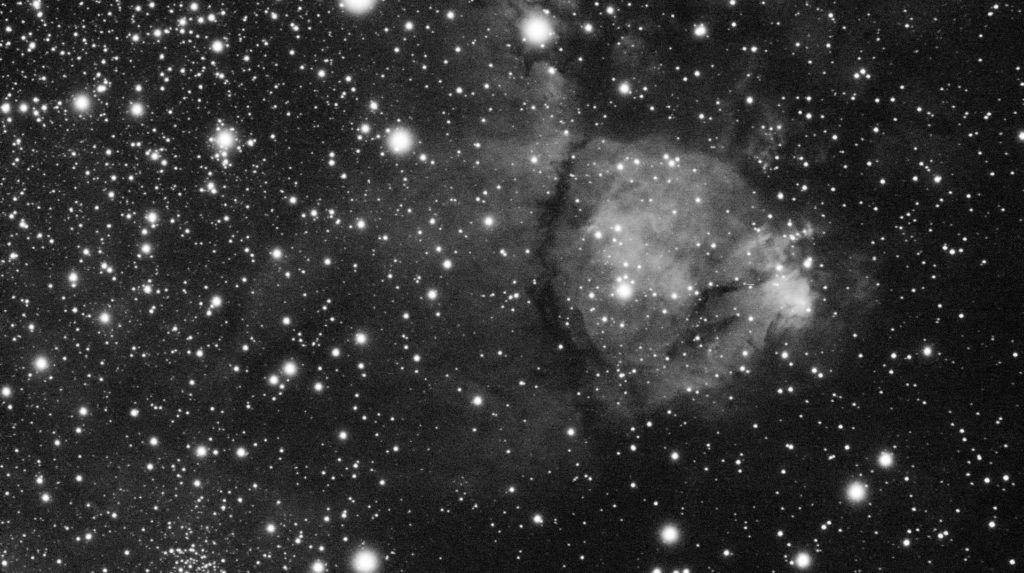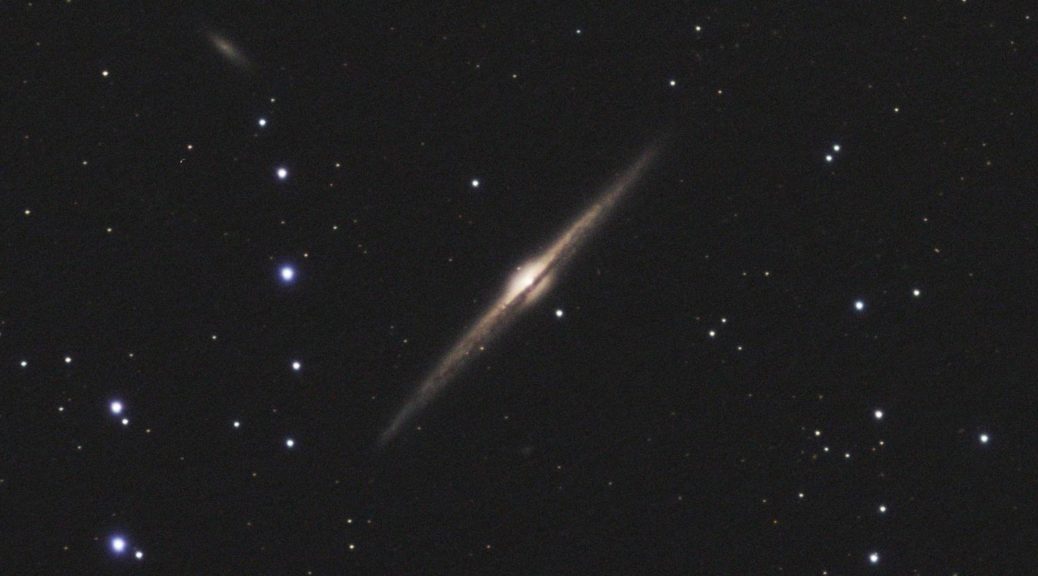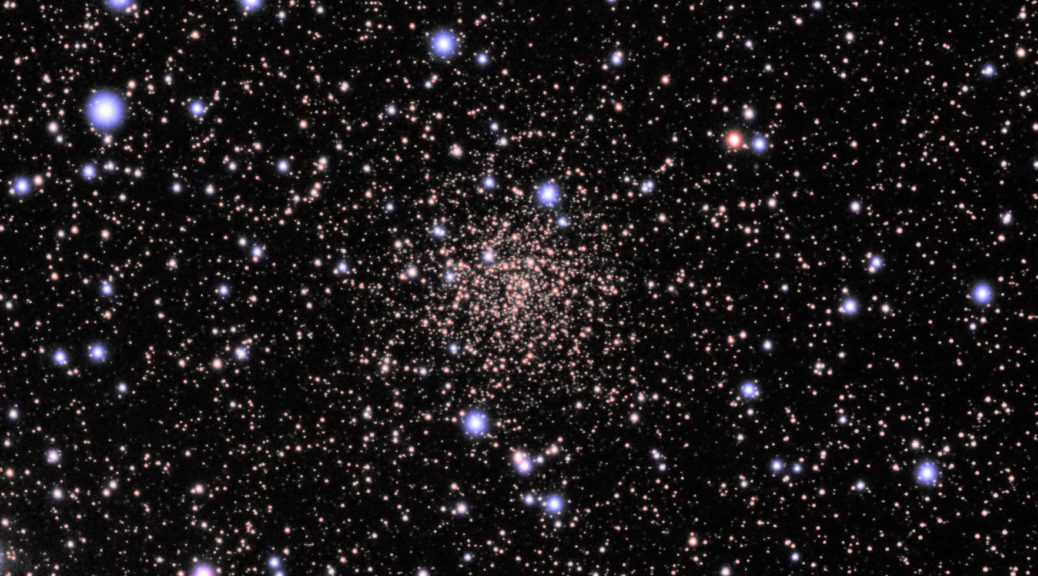
NGC 6791
Acquisition Date: June 18, 2018
This was my first attempt at color with a monochrome camera. It was a real learning experience.
The image you see uses synthetic luminance which I created from the RGB stacks with the help of StarTools. A couple weeks earlier, I imaged in actual luminance but made the mistake of not taking the full suite of calibration frames. This failure affected its appearance so I rejected it in favor of synthetic luminance.
Factoid: NGC 6791 is an enigma. The stars are twice as old as our Sun but have an Iron-to-Hydrogen abundance ratio (metallicity) that is more than twice that of the Sun. This flies in the face of the rule of thumb that “older means metal-poor”. NGC 6791 is one of the most studied star clusters
Technical Details:
William Optics 71mm f/5.9
Altair 290M camera (uncooled)
Optolong LRGB filters
Unitron Model 142 GEM
Passive tracking with PEC
No active guiding
Gain 100 (FWD: 15ke-, 3.66 e-/ADU)
Offset: 20 ADU
Captured over 2 nights:
R: 80x 50s
G: 80x 50s
B: 80x 60s
Total integration time: 138 minutes
PIPP 2.5.9
Deep Sky Stacker 3.3.2
StarTools 1.3.5.289
